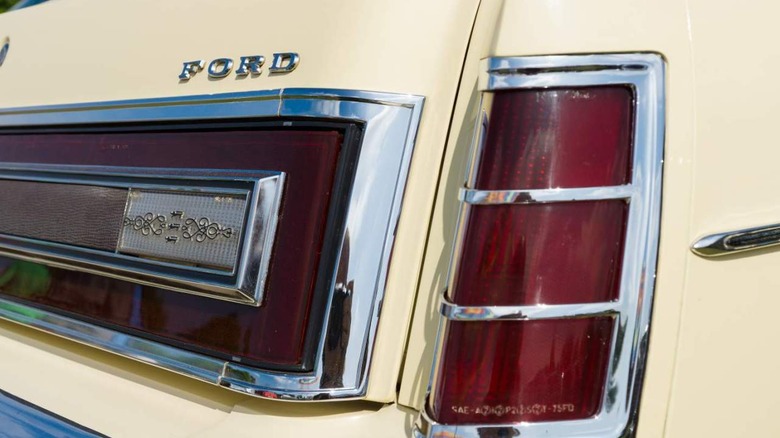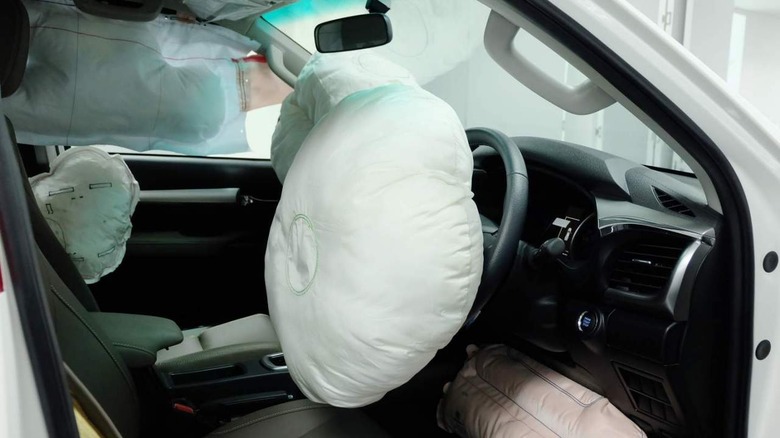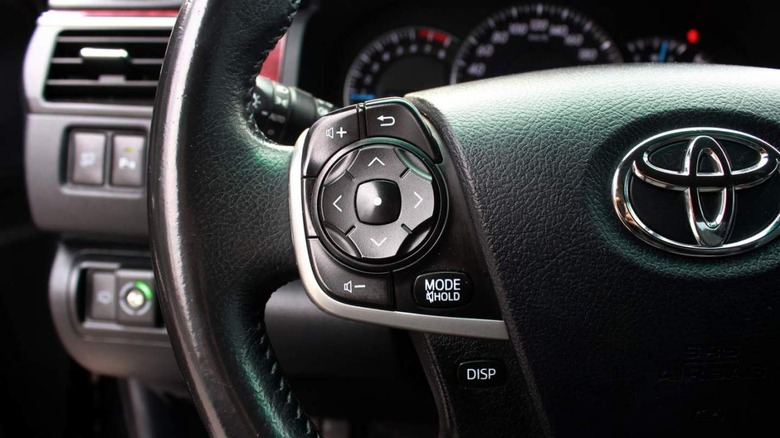The Deadliest Car Recalls in History
The innovations and advances in technology driving the institutions of the automotive industry over the last century have been truly remarkable. The pursuit of faster and more efficient cars has pushed engineers to test the limits of materials, designs, and physics itself, as outlined by Jardine Motors Group. But with the ability to move faster comes the dangers of serious injury from wrecks.
And with the added danger of speed comes the growing volume of traffic on American roadways. According to the Federal Highway Administration, 60% of urban freeways are considered congested. With the sheer number of vehicles on the roads, accidents are going to happen. Automakers have made great strides in bringing safety standards up to a level in which fatalities happen far less often.
As the U.S. Department of Transportation points out, when defects arise, manufacturers issue recalls on vehicles to repair or replace defective components at no cost to the consumer. Recalls cost companies money and they generally go to great lengths to avoid them, as evidenced by efforts from Ford and Mazda to avoid the Takata airbag recall in 2021 (via ABC News). While many may think this is a thing of the past, defects and deadly recalls span the course of decades up until the present. These are the deadliest recalls in automotive history.
Ford Pinto gas tank fires
When the time came for Ford to enter the market for subcompact vehicles, CEO Lee Iacocca demanded that his development team make it happen quickly. Ford delivered the Pinto — a car that was light, economical, and appealing.
But in the late 1960s, safety had only been recently put into consideration in the manufacture of any vehicle, according to the National Museum of American History. The Pinto fulfilled demand for compact cars well, with a 1977 Mother Jones article noting the company sold more than 2 million cars over its decade-long production run. Only after paying out millions in civil suits and the Mother Jones story did an official recall happen.
But it was early in its sales timeline that problems developed, the American Museum of Tort Law notes, and very late for them to be addressed. Drivers and passengers alike became trapped in Pinto infernos after experiencing a rear-end collision in which their vehicle became ensconced in flames, often with the doors jammed shut, preventing escape from their fiery demise.
Sadly, according to the Mother Jones article, an estimated 500 deaths were caused, with six of them occurring after the recall was issued but before parts were in stock at dealers. To add insult to injury, Ford Motor Company had noted the inherent danger lurking in the Pinto model but, according to a leaked internal memo, had calculated losses from victim payouts would be less than the cost to alter the vehicles in production.
Audi 5000 unintended acceleration
Audi entered the American market in 1970 with 100LS with moderate sales success and grew its model line and sales figures readily through its first decade in the country (via AutoBlog). By 1978, AutoBlog notes, Audi had an upmarket model ready to compete in the luxury market with the 5000 model. Reports of sudden acceleration when shifting out of park arose five years into production (via Center for Auto Safety). Hundreds of accidents occurred, including a tragic story, according to a 1986 story in The Washington Post, of a son being pinned in his garage with his mother at the wheel, helpless to do anything to prevent his death.
Audi initially suspected the accidents were some sort of driver error, according to the Center for Auto Safety, but consumer safety groups and a group of Audi owners argued it was a fault with the vehicle. VWoA chose to issue a series of recalls to alleviate the issue with a shift lock requiring the brake to be depressed when shifting out of park, and later a change to the idle stabilizer valve, the Center for Auto Safety noted.
There never was a definitive study to show that these parts were defective and caused any unintended acceleration, with institutions in Canada and Japan finding no defect. While the article noted that Audi was never found to be at fault, they made good faith efforts to alleviate this problem.
Ford park to reverse failure
The case of Ford transmissions failing to remain in park makes for an interesting study. The Center for Auto Safety explains details which initially assert that Ford produced cars from 1966 to 1977 in which unattended and running cars, with the transmission placed in park, can suddenly start moving after the shifter slips into reverse. According to the report, the NHTSA received 23,000 complaints of this defect resulting in 6,000 accidents, 1,710 injuries, and 98 deaths.
The fatal accidents primarily involved those unable to react quickly enough to avoid harm, the Center for Auto Safety article noted. In 1980, according to Autoweek, Ford struck an agreement with the government to mail consumers a label to be affixed to the dashboard to instruct drivers to turn off the ignition before leaving the driver seat.
Already embroiled in a recall issue with the Pinto, Ford sought to minimize a financial blow from a recall. Four years later, the New York Times reported that the Center for Auto Safety once again sought to have Ford clean up their mess, citing that another 77 people perished as a result of their faulty transmissions since they issued the sticker recall. In the end, nothing more was done as the Center for Auto Safety brought a lawsuit that ended up without any further action years later. Stickers can still be found occasionally on dashboards in salvage yards today.
Takata airbags
The airbag represents one of the greatest advances in automotive safety since its introduction in 1972, according to Motor Biscuit. From their humble beginnings protecting the driver of early-equipped vehicles to modern cars with multiple airbags protecting occupants from above, below, front, and sides, airbags are directly responsible for over 50,000 saved lives (via USDOT). However, a defective airbag can be deadly, as seen in the recall of faulty airbags by Takata Corporation of Japan.
The supplier of choice for decades to multiple automotive brands in North America, Europe, and Asia, Takata produced airbags that, according to The Christian Science Monitor, had up to four fatal flaws. The Associated Press reported a woman in Malaysia involved in a minor traffic collision died when the airbag in her Honda ruptured, leaving her bleeding from her chest, and that, as of 2016, 11 fatalities could be contributed to the defective airbags. Fatalities such as this occur when the propellant in the airbag propels a component shooting a metal fragment with extreme force into the body of the occupants.
This issue is ongoing, and assessing the complete number of accidents, injuries, and fatalities is difficult because the global recall is growing, according to data from the NHTSA. Furthermore, the recall covers vehicles from several automakers across multiple continents, making it the largest automotive recall to date. The NHTSA announced in 2019 and 2020 the addition of nearly 3 million vehicles to the recall, adding to the already recalled 42 million vehicles.
Toyota unintended acceleration
Recall issues often come to a head when governments want a manufacturer to be held responsible for accidents that appear to be caused by defects in their products, as outlined by The Atlantic. In 2003, shortly after Toyota introduced vehicles with electronically controlled throttles, reports of sudden acceleration cropped up and began making headlines (via LA Times).
Toyota and the NHTSA began their respective investigations into the cause of the problem, the LA Times article noted, which had led to at least 5 deaths. Toyota first announced action with the recall of floor mats they said could get caught up near the accelerator pedal, preventing it from returning to a regular position at idle. When Toyota vehicles continued to be involved in sudden acceleration accidents, Toyota issued a recall for revised accelerator pedals with a shortened pedal meant to stay clear of the floor mats.
Car and Driver reported that eventually, the Department of Transportation conducted an extensive investigation into the cause, including recruiting engineers from NASA to look into the programming code of the cars' electronic control units and extensive physical testing of accelerators, electronic throttle controls, and floor mats. After this detailed and scientific testing regimen, the DOT report concluded there was no fault with the Toyota vehicles, and that the most likely cause was driver error.
General Motors ignition switch
By 1999, all manufacturers had to equip their vehicles with at least front driver and passenger airbags (via History.com). But these life-saving devices only protect the occupants when they are functional. According to a timeline laid out by NPR, accident investigations into the GM ignition switch issue that had led to at least 13 deaths began in 2005, linking the wrecks to faulty ignitions by 2007. However, defects with the switches were known to General Motors in the Chevrolet Cobalt and related Saturn Ion vehicles as early as 2001, according to Reuters.
A common thread in all these recalls is that the companies chose to ignore defects until the media forced their hand. GM was no different and only after multiple investigations and dozens of fatal crashes were they forced to deal with the situation, the Reuters article explains. The mounting deaths attributed to the ignition switches, along with subsequent investigations, led Senators to grill GM executives about the issue, according to Vox.
In the end, GM recalled nearly 10 million vehicles, faced dozens of lawsuits from the victims of crashes, and paid a $35 million civil penalty to the American government, according to the Center for Auto Safety. The defect resulted in heartbreaking stories of carnage on the streets, including a woman being cleared of criminal charges for causing her boyfriend's death.






